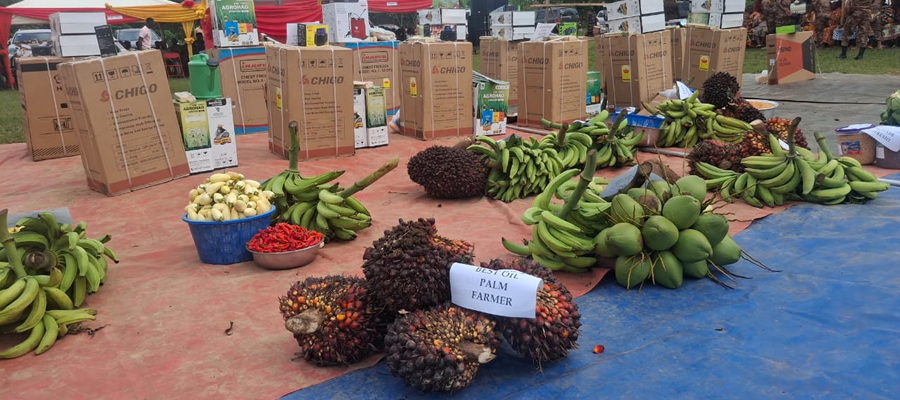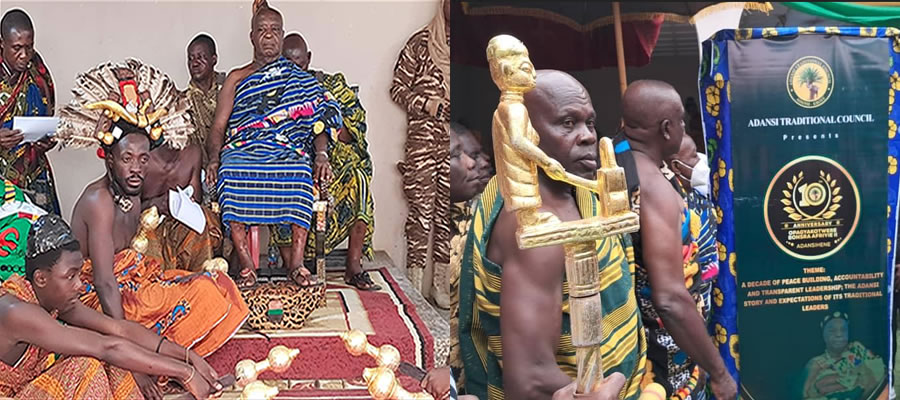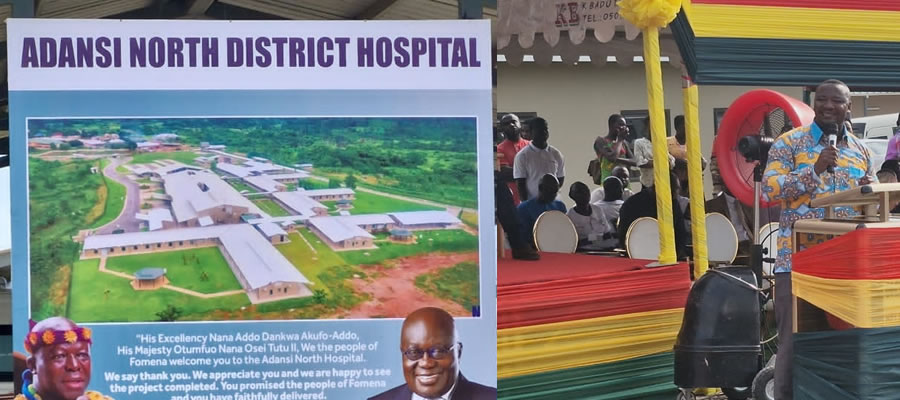

THE CULTURE OF ADANSI PEOPLE
1. TRADITIONAL SET-UP
The Adansi traditional set up is made up of seven divisional chiefs. The divisions are Ayaase, Edubiase, Dompoase and Bodwesango forming the NIFA division and Akrofuom and Akrokerrifie forming the BENKUM division. Fomena is the seat of the Paramount Chief of the Adansi Traditional area. The Adansi People have seven stools with Fomena being the seat of the paramount chief. This serves as a unifying factor to make the people united for development.
2. ETHNIC DIVERSITY
The population is predominantly Akan with Adansis forming the greater majority. However other ethnic groups are also found; notable among them are the Ewes, the Krobos and Fantes. The minor ethnic groups are mostly settler farmers. The entire Adansi North is made up of about 80% Akans and 20% made up of varied and numerous tribes in the country, who are scattered throughout the district as settler farmers. Ethnic conflict is therefore almost non-existent in the district.
3. COMMUNAL SPIRIT
Some communities like Akrokerrifie, Akrofuom, Bodwesango and Old Edubiase have been without chiefs as a result of chieftaincy disputes. This situation has affected the communal spirit of the people. The people are therefore irresponsive to communal labour in most towns and villages. It is anticipated that if the divisional and sub-divisional chiefs are installed the people could be mobilized for effective development projects. Communal spirit in the district is very low. This is due to the fact that only two out of the seven divisions of the Adansi stools have chiefs. Majority of the stools are without chiefs, as a result, the people lack leadership at the grassroots to move them to assist in developmental efforts. This has affected and continues to affect development negatively in the district.
4. TRADITIONAL KNOWLEDGE, ATTITUDES AND PRACTICES
The people in the district still maintain the traditional taboo days. Tuesdays are observed as taboo days in most parts of the district. Some rivers and streams also forbid farmers from crossing or working around them. Other taboo days are Akwasidae and Awukudae which occur every forty days.
Much as these taboo days serve as resting periods; they equally contribute to low agricultural productivity as everybody is obliged to observe such days. Funerals are not performed in Fomena and Ayaase on Sundays as the river Ankaful forbids cladding of mourning clothes on Sundays.
Majority of the people are Christians and a sizeable number of the people are Muslims. Others also practice the African traditional religion. The chiefs and people of the Adansi traditional area celebrate YAM FESTIVAL as the main festival of the area. To climax the festival, two rituals are performed namely Ntaatoso and Odwira. It is believed that, traditionally BONSAM, a local idol, is supposed to eat yam before everybody. The Akrokerrihene therefore performs the Ntaatoso ritual on Bonsam. Odwira is also performed one week after the Ntaatoso by the paramount Chief.
All the divisional chiefs and their subjects celebrate the YAM FESTIVAL. Yam festival is celebrated every year by the chiefs and the people of Adansi. This attracts so many people of Adansi origin from far and near to Fomena as a result, projects are initiated and resources mobilized for development.
The significance of the festival is that, it unites the people. During the festival, sons and daughters of Adansi traditional area use that opportunity to return to their roots to contribute to development projects initiated by the various communities. The settler ethnic groups co-exist with the Adansis and chieftaincy disputes in some communities have never resulted into any conflict. The people are therefore living in harmony.
Date Created : 11/10/2017 1:57:23 AM













 facebook
facebook
 twitter
twitter
 Youtube
Youtube
 +233 593 831 280
+233 593 831 280 0800 430 430
0800 430 430 GPS: GE-231-4383
GPS: GE-231-4383 info@ghanadistricts.com
info@ghanadistricts.com Box GP1044, Accra, Ghana
Box GP1044, Accra, Ghana